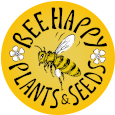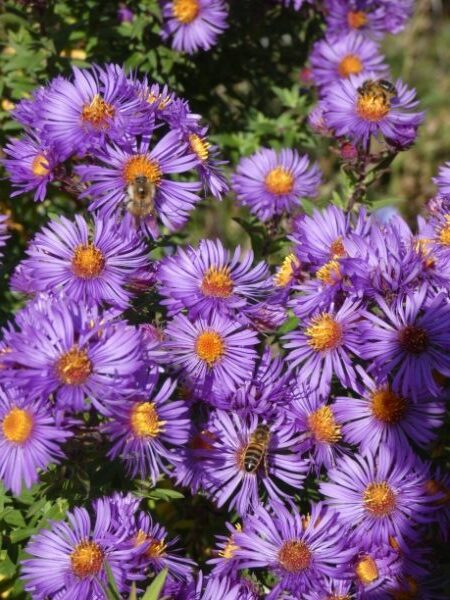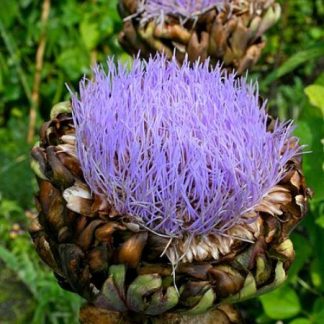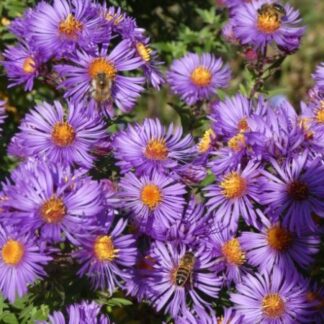Description
Asteraceae (family name)
Common name: Michaelmas Daisy
Forage for Pollinators: Produces Pollen & Nectar in great abundance for Long and Short-tongued Bumblebees, Honeybees and Solitary bees. It is valuable forage for building up winter reserves, and is worked freely for both nectar and pollen for this huge range of bees.
Flowering times: August, September, October.
Growing information: HERBACEOUS PERENNIAL wildflower native to North America but introduced into Europe as far back as 1710. There are some good bee-friendly garden cultivars, such as ‘Helen Picton’ which has the RHS award of garden merit. Hardy to minus 30ºC and maturing to 5′ tall. Popular garden flowers due to their resistance to mildew; they like moisture-retentive soil (a mulch is recommended), and it should be acidic to neutral. The plant is not ideal as cut flowers due to their flower heads closing up at night, but we have found they make good potted plant subjects in large terracotta pots with many plants tightly packed. They are drought-tolerant with rich, purple flowers (varying from purple, violet, and lavender to all shades of pink) with orange-yellow centres and thrives in full sun or light shade in all but the driest soils. When the plant is flowering, the lower leaves can dry up in dry spells, this is just a trait of the species. They add autumn colour to formal borders and are stunning in an informal ‘prairie style planting, especially when grown with grasses and other autumn-flowering perennials, such as Echinaceas, Dahlias and Sunflowers.





